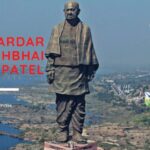This post is the precise notes of NCERT class 11 chapter 6 part 2.
The Three Orders Part 2 notes by Vibha Maam
England
- England is a variant of ‘Angel-land’.
- The Duke of Normandy, William defeated the Saxon king of England in the 11th century.
- In the 6th century, Angels and Saxons were part of England.
- France and England were at war because of disputes over territories and trade.
- William I distributed his territory to180 Norman nobles who had migrated with him.
- Nobles were expected to give him military help.
- Anglo-Saxons became tenants of various levels of landholders.
Factors affecting social and economic relation
- Some changes in the environment were gradual and not detectable.
- Agriculture technology and land use changes were more dramatic.
The Environment
- Most of Europe was covered with vast forests from the 5th to 10th centuries. So, agricultural land was limited.
- Due to the cold climate Europe had severe and prolonged winters, that’s why crops could not grow well and agriculture yields were reduced.
From 11th century Europe entered warm face average temperature increased it had profound effect on agriculture there was prolong summer season for growing crops and glowing soil this made expensive of the area under cultivation possible.)
Land Use
- Initially, agriculture technology was very primitive
- Agriculture was labour intensive peasants use wooden plough, drawn by oxen.
- Crop rotation method was ineffective
- The land was divided into two halves, one field was planted and another field was left fallow.
- Another year fallow land was planted and half land left fallow, with this method the soil slowly deteriorated.
- The lives of the poor were difficult and miserable and famines were common.
- Despite these hardships, the lords were anxious to maximize their income.
- They forced peasants to bring under cultivation all the land in the manorial estate, but peasants were oppressed.
- They refused to perform unpaid extra services. they came into conflicts with lords.
New Agriculture Technology
- By the 11th century, there is evidence of several technological changes.
- Cultivators began using heavy iron- tipped plough and mouldboard
- With this plough the nutrients from the soil were better improved
- Instead of the neck harnessing, the shoulder harness came into use
- Horses were now better shod, with iron- horseshoes prevented foot decay.
- There was increased use of wind and water energy for agriculture like milling corn and pressing grapes.
- There were revolutionary changes in the land use. The two-field system shifted into three -field systems, where two fields had grown different crops for humans and animals and one field left fallow.
- Each year they rotated the use among the three fields.
- By this system, food production was doubled.
- Different food grown produces a lot of fodder for animals.
- Cultivators got better opportunities.
- The average size of a peasants farm shrank from about 100 acres to 20-30 acres by the 13th century.
- A smaller plot gave the peasants time for other activities.
- But peasants had not enough money to set up watermills and windmills but peasants were able to take initiative such as extending arable land, three field rotation of crops, setting up small furnaces(forges) and smithies in the villages, where iron-tipped ploughs and horseshoes were made and repair cheaply.
- From the 11th century feudalism was weakening because economic transactions were becoming more and more money based.
- Peasants were selling crops and services for money.
- The increasing use of money began to influence prices, which became higher in times of poor harvests.
In England, for instance agricultural prices doubled between the 1270s and 1320s.
A Fourth Order – new towns and town people
- Expansion in agriculture was accompanied by growth in three related areas:- population, trade and towns.
- Europe’s population increased at 62 million around 1200 and 73 million in 1300.
- Life expectancy was increased by 10 years longer than in the 18th century.
- Agriculture increased and became able to sustain higher levels of population towns began to grow.
- The town-market had begun to sell the surplus grains, cloth, tools like a town square, a church, and roadside shops.
In other places, towns grew around large castles, bishop’s estates or large churches.
- Towns offered the prospect of paid work and freedom from the lords’ control.
- ‘Town air makes free’ was supported to say, if a serf could stay for one year and one day without his lord discovering him called free serf.
- Many serfs carving to be free ran away and hid in towns.
- Many free Peasants and serfs provided unskilled labour in town.
- The bigger towns had a population of about 30000.that’s why it is called the fourth order.
- The basis of the economic organisation was the guild. The association controlled the quality, price and sale of the product.
New trade routes with west Asia were developing.
- Scandinavian merchants exchanged furs and hunting-hawks for cloth, English traders sold tin, France traders sold commerce and crafts.
- Craftsmen used to move from manor to manor.
- As the number of towns grew and trade continued to expand, town merchants became rich and powerful.
Cathedral Towns
- From the 12th century, large churches called cathedral. These belonged to monasteries.
- Cathedral was built of stone and took many years to complete.
- They become center of pilgrimage, thus small towns developed around them.
The Crisis of the 14th century
- There were three reasons to slow down the Europeans’ economic expansion.
1) Environment
- 300 years of warm summers had given way to a bitterly cold summer. This environment makes it difficult to grow crops on higher altitudes.
- Therefore, less income in taxes for the government, shortage of food and pasture and severe famine hit Europe between 1315 and 1317 followed in the 1320 by massive cattle deaths.
- In the 13th and 14th century, ships carrying goods from distant countries, along with the ships came rats carrying the deadly Bubonic Plague inflection ( the black death) was hit by the epidemic between 1347 and 1350.
- The population of Europe 73 millions in 1300, stood reduced to 45 million in 1400.
2) Economic Crisis
- Depopulation means major shortage of labour
- Imbalance between agriculture and manufacture
- The price of agricultural goods dropped
- Wage rates increased twice their earlier wages
3) Social unrest
- Agricultural prices came down and wages of laborers increased. They were better educated and more prosperous ones.
- They violently opposed the service – labour. In 1323, peasants revolted in flenders, in 1358 in France and 1381 in England.
Political Changes
- European kings strengthened their military and financial power in the 15th and 16th centuries.
- Historians called these kings the new monarchs. They organised standing armies and permanent bureaucracy and taxes.
- Louis XI in France, Maximilian in Austria, Henry VII in England and Isabelle and Ferdinand in Spain were the absolutist rulers.
- These kings dissolved the feudal system and introduced professional trained infantry equipped with guns.
- By increasing taxes in England many rebellions occurred and were suppressed by the kings.
- In the 16 century, France was in part a contest between royal privileges and regional liberties.
- the nobility transformed themselves into loyalists. They were given permanent positions in the administration; this is the way royal absolutism has been called a modified form of feudalism.
- The king was no longer at the apex but he was now at the centre of administration because of centralisation.
- Non-aristocratic elements were also the parts of the monarchy like bankers and merchants.
- Patronage became the means of ensuring such cooperation and patronage could be given or obtained by means of money.
France and England
- Louis XIII was the king of France in 1614 he was called the ‘child King’ because of small age.
- His parliament, known as Estates General , had three houses:- clergy, nobility and peasants.
- The first session was summoned in 1614 and again for nearly two centuries, till 1789, because the kings did not want to share power with the three orders.
- The Anglo-Saxon(tribal community) had a great council.
- The king had to consult before imposing any tax.
- This parliament consisted of two houses:- the House of Lords and the House of Commons.
- King Charles I ruled for 11 years (1629-40)without some money without being summoned to parliament. another House of parliament decided
- A war against him and later executed him and established a republic.
- Today France has a republic and England has a monarchy.











Amazing notes. ✨👍
I loved as much as you’ll receive carried out right here. The sketch is tasteful, your authored material stylish. nonetheless, you command get bought an nervousness over that you wish be delivering the following. unwell unquestionably come more formerly again since exactly the same nearly a lot often inside case you shield this hike.